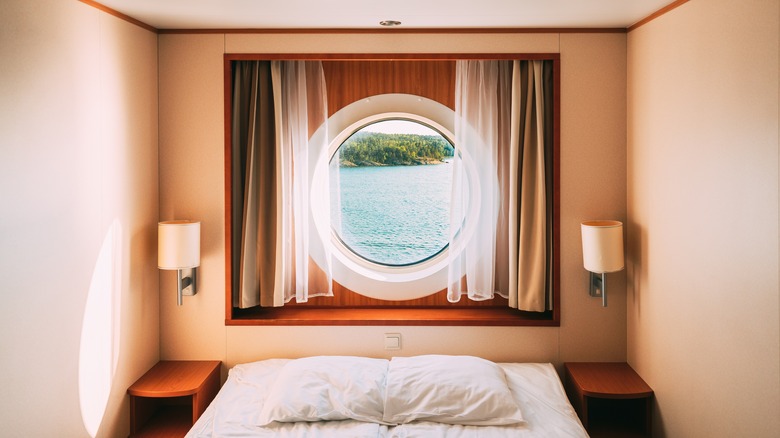Whether you’re going far away or just cruising around the United States, there’s plenty to look forward to once you’ve pulled the trigger and booked that cruise you’ve been talking about. From the onboard activities and the elegant dining options to the entertainment experiences and the panoramic views of the open ocean, a cruise really can be the vacation of a lifetime — if it’s done right. As important as the aforementioned things are when it comes to guaranteeing a memorable seafaring vacation, something else that’s integral is selecting the right cabin for you and your party.
In many ways, a cruise cabin can make or break your entire trip. After all, if you find yourself in the right cabin, you’re bound to enjoy the majority of your vacation, ending each day of your cruise in the comfort of your little private paradise. On the flip side, if you wind up in the wrong cabin, your dream trip could turn into a nauseous nightmare. Using some inside knowledge provided by former cruise ship workers and industry experts, as well as some personal experience, we’ve created a list of the best cabins to book on a cruise ship. To find out which type of stateroom will be best for your particular needs, read on.
Midship cabins are great for those prone to motion sickness
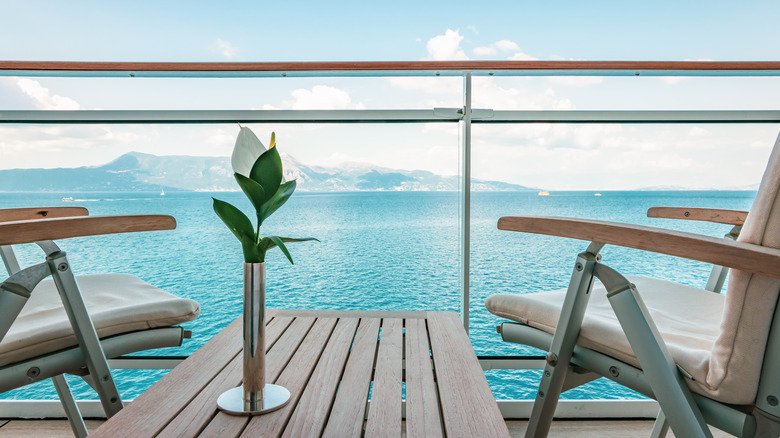
Are you or anyone in your party prone to motion sickness? Then your best bet is to book a room as near to the middle of your cruise ship as possible. Whereas the front and back of cruise ships are known for rocking up and down on the open ocean, the middle of a cruise ship is typically seen as the most stable part of the vessel, moving comparatively little during the course of a voyage.
If you still feel yourself getting sick in this cabin, shut the blinds on the window and avoid staring outside — seeing the uneven surface of the ocean might aggravate your sickness even further. An alternate approach is to keep the windows open and fix your gaze as far on the horizon as possible. By doing so, you’ll help your brain adapt to the free-flowing movement of the ocean, allowing you to better contend with the rocking movements of the ship.
Cabins near the waterline are also a solid option
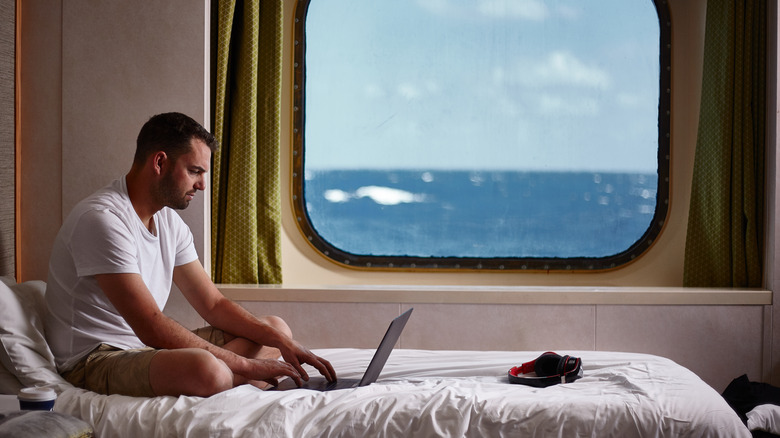
If you want to go the extra mile in combating motion sickness, it’s also advisable to seek a room as close to the waterline as possible (if it’s a midship cabin, even better). Like cabins located around the middle point of a cruise ship, rooms on a ship’s lower levels have a reputation for being far more stable than rooms higher up. This is down to the ceaseless rocking one can expect to feel on a ship. As a general rule, assume the rhythmic back-and-forth swaying worsens with each new level, with the rocking motion growing more noticeable as you get higher up.
While a waterline cabin might not be as scenic as a room high over the sea, these rooms afford plenty of comfort to anyone with tummy troubles. It probably won’t eliminate seasickness altogether, but it leaves you with a better chance of avoiding nausea, especially when compared to most other cabins onboard. Far from being a cabin with nothing but drawbacks, staterooms on the lower decks also allow guests easier access to the main areas of the ship, including the atrium, onboard restaurants, and the gangway for whenever your ship makes port.
A cabin near the dining hall pays off at mealtimes
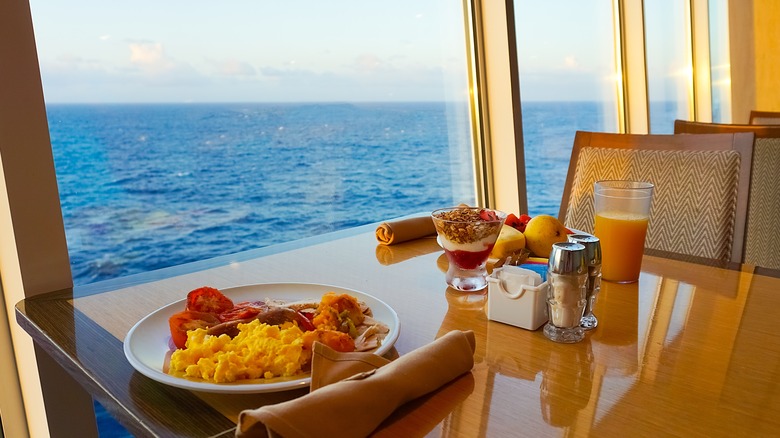
Solarisys/Shutterstock
It’s not an exaggeration to say that the onboard dining is one of the major things to look forward to on any cruise. With most cruises offering unlimited buffets for every meal and a number of other themed restaurants, guests can expect to do a ton of eating during the course of their vacation. With that in mind, if you truly plan on taking full advantage of your cruise’s onboard options, you might want to think about booking a room as close as possible to either your ship’s dining hall or buffet.
In most cases, the main dining hall on a ship is only open on a limited basis, unlocking its doors for breakfast, lunch, and dinner. To prevent overcrowding, guests are usually assigned a specific time, so people come in controlled waves rather than in a madcap rush. If you plan on eating at the dining hall every day, you might want to think about booking a cabin as near as possible, giving you ready access when a meal is being served. Alternatively, if you plan on taking full advantage of the all-you-can-eat buffet for breakfast, lunch, and dinner, find a cabin near that, instead. Either way, you’ll be saving time for other activities.
Cabins near the atrium put you right in the action
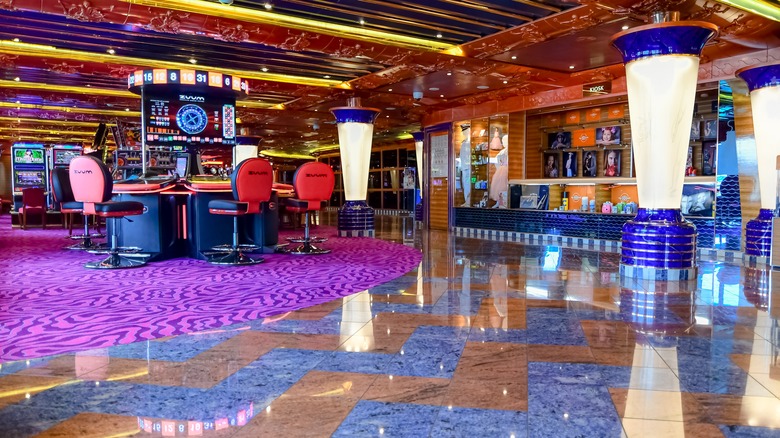
ODIN Daniel/Shutterstock
The atrium is the main area of activity on a cruise ship. In addition to helpful resources like the concierge and activities desk (where you’ll book your excursions), most ship atriums also feature restaurants, cafes, and other tiny shops for you to explore at your leisure. Given how much time you’re likely to spend walking around the atrium, it’s certainly not a bad idea to think about reserving a cabin as close to the area as possible.
Of course, the atrium tends to be one of the more crowded areas of the ship when evening rolls around, with people enjoying a cocktail at the bar, dining in a restaurant, or visiting the ship’s casino or onboard theater. For those who are looking to enjoy some nightlife, having a room close to the atrium will allow you ready access to some of the ship’s foremost points of interest. In addition, given the atrium’s central location on the ship, it also means easier passage from one end of the ship to the other.
Stern-facing cabins with balconies are highly sought after
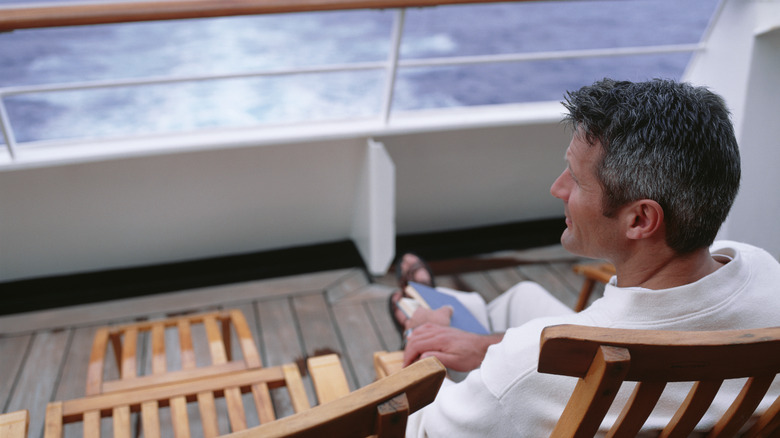
Steve Mason/Getty Images
Staterooms located at the very back of the ship are among the most scenic cabins you’ll find onboard. After all, what’s better than waking up in the morning and seeing whatever port you’re disembarking from disappear into the horizon? More so than front-facing cabins, staying in a stern-facing cabin means you’ll have uninterrupted views of the open ocean at your fingertips (rather than having that pesky bow getting in the way). To maximize your idyllic view of the ocean, guests might want to consider booking a balcony suite at the aft section of the ship.
Given how relatively quiet this back area of a ship often is, you may be able to bask out on a private balcony, enjoying the peace and tranquility of the sea in all its splendor. Some cruise ships even have slightly larger balconies at the stern of the ship, and often with no added fees or charges for the additional space. However, as gorgeous as these balcony rooms tend to be, it’s worth noting that, given their position, stern-facing cabins do tend to rock a bit, but if you don’t mind that, they’re a great option.
Front-facing cabins are often more spacious
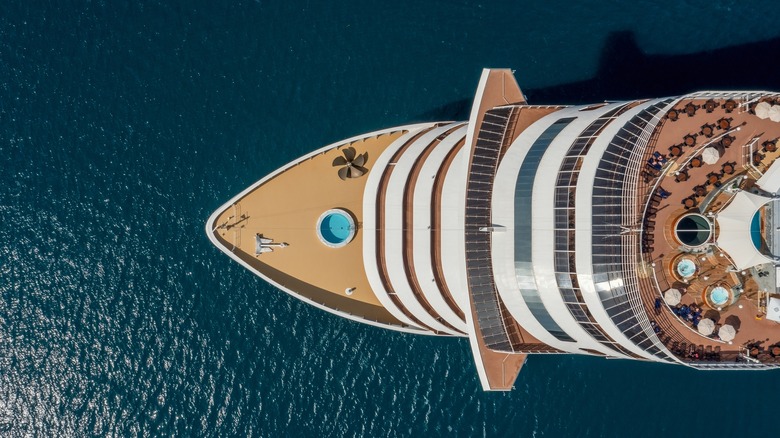
Kokhanchikov/Shutterstock
Like stern-facing cabins, cabins that overlook the front of a cruise ship provide guests with plenty of picturesque views, just of a different type. For example, the views when you’re approaching your next destination are often spectacular, and you’ll probably have a nice view of the location while docked, too. Not only that, but most front-facing cabins are also slightly larger than their counterparts in the midship or aft sections of the ship. This has to do with the larger window at the front of the cabin, which expands outward from the floor to the ceiling.
In reality, it’s not that much more space, but that little bit of extra room can make all the difference when you’re in a cabin for weeks. If you tend to spend a lot of time in your quarters, you might want to consider a room at the front of the ship. Of course, just like rooms at the back, they can get a little bumpy when the weather isn’t playing ball. If you have a strong enough stomach and a sturdy set of sea legs, however, it should be manageable.
Cabins on higher levels offer stunning views
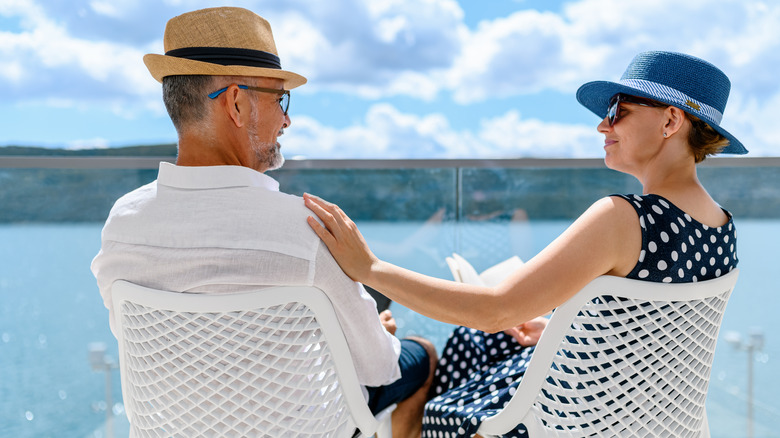
Dardespot/Getty Images
To be clear, midship cabins near the main waterline are not without their own incredible views of the ocean. Yet, it’s fair to say that, like any high-rise hotel in New York or Los Angeles, the higher up your cabin is, the more scenic your view of the sea becomes. From looking out at the open ocean to taking in a new location as your ship makes port, cabins on higher decks offer a multitude of gorgeous sights for guests to marvel at, all from the comfort of their room.
The panoramic views are the primary reason to book a cabin on the upper decks, but there are practical pros to being high up on the ship, too. For example, if you’re on a ship with an open-air cinema, then it’s probably going to be located on the upper levels, giving you better access. There’s nothing stopping you from taking an impromptu film when your cabin is a stone’s throw away from the screen. Things like mini-golf and water sports are also likely to be nearby. If you can handle the rocking that comes with the upper decks, you’ll feel like royalty up there.
Cabins near the pool will save you lots of time
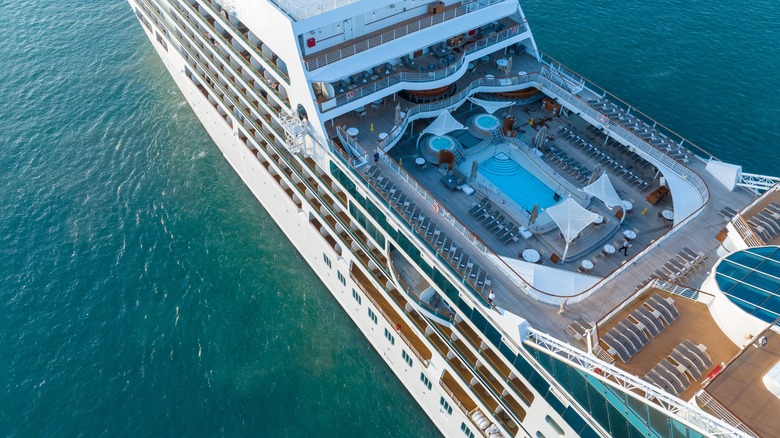
GreenOak/Shutterstock
The main pool deck is always one of the most active areas on a cruise ship. While between destinations, most guests opt to spend their time lounging around the pool, taking in the sun, enjoying a beverage, and soaking in the water. With how relatively limited the number of onboard activities are during the day, these pools see the largest crowds when ships are out to sea, so much so that it might prove a headache even getting a chair on the pool deck. One effective strategy to navigate these poolside crowds is to book your cabin as close to the pool deck as you can.
Yes, this might mean more noise, but by being here, you’ll ensure easier access to the deck, allowing you to grab a spot early on in the day before it gets too crowded. The idea is to beat the rush and find the most optimal seating on the pool deck, whether that’s in the sun, by the pool, or even by the hot tub. What’s more, having a room close to the pool deck also helps you overcome the headache of dragging your pool essentials to and from your room, an activity made all the more annoying in a swimsuit and flip flops.
Cabins surrounded by other cabins are the quietest
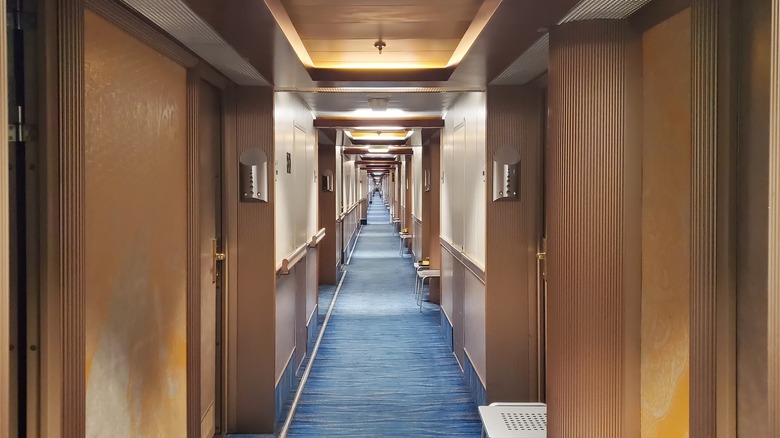
Ihor Koptilin/Shutterstock
One potentially annoying aspect of any seafaring vacation is the high volume of sounds you’ll hear outside your cabin door. Like hotel rooms, a cabin’s location can greatly influence how much you happen to overhear on a cruise ship, with some cabins tending to be far noisier than others. It may seem a bit confusing on paper, but cabins surrounded by other cabins on all four sides tend to be the quietest. This has to do with the fact that the extra rooms above, below, and to the side of these cabins acts as a natural sound barrier, blocking out any noise from opposing decks.
Given that these cabins also tend to be somewhat isolated from the atrium and the elevators, it’s also unlikely that the hallways around your cabin will receive a ton of foot traffic. If getting a peaceful night’s sleep free from interruptions is a key part of your vacation plans, it’s a good idea to look into getting a cabin stuffed between staterooms. Yes, these rooms may be located some distance away from the main attractions on the ship, but they’re guaranteed to be a lot quieter.
Interior cabins are cost effective
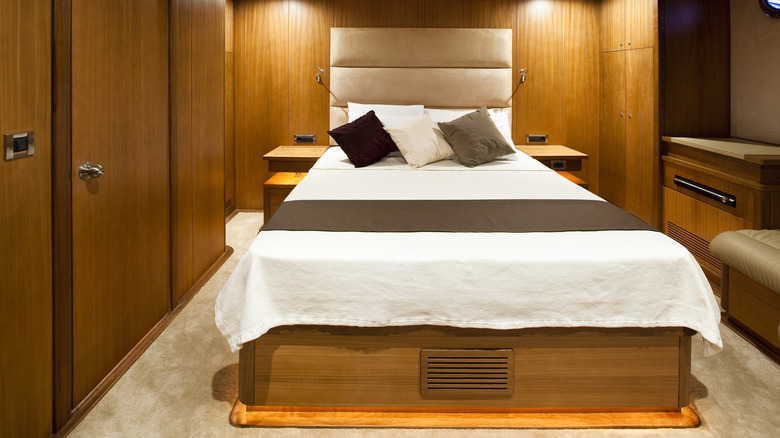
Bonetta/Getty Images
We know what you’re thinking: An interior cabin won’t have any windows. That’s true, and if having an ocean view from your room is a must for your trip, then you might as well skip to the next cabin type on this list. However, if you’re interested in a budget-friendly cruise experience, interior cabins are always worth considering, offering the best bang for your buck. For a relatively low price (you’re definitely not going to be paying the same price as those in the cabins with big balconies), guests usually receive the same basic amenities as those staying in a standard stateroom.
For anyone who wants to bask in the carefree atmosphere of a cruise without spending too much, interior cabins will always be attractive, even if they’re not as fancy. If you’re on the fence about whether to opt for an exterior cabin or save a few bucks with an interior cabin, it’s helpful to sit down and really think about how much time you’re planning to spend in your room. After all, if you’re going to be by the side of the pool or off on an excursion during the daytime, what’s the point in having an exterior cabin with a view you’ll barely be around to enjoy?
Cabins near the elevators are the most convenient
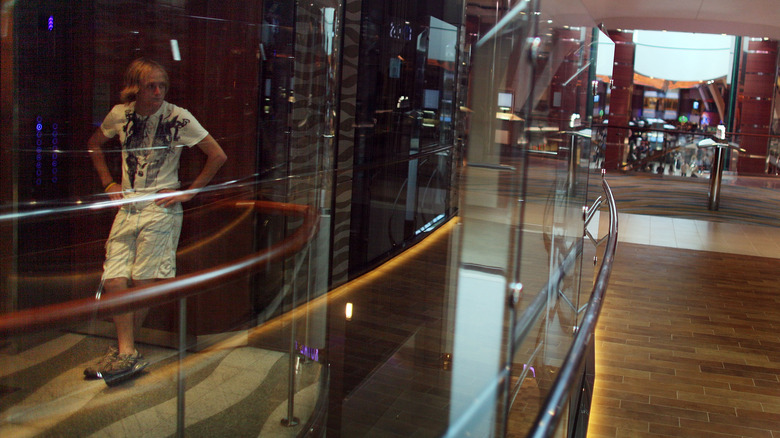
Joe Raedle/Getty Images
Cabins located near a ship’s elevators are perhaps the most underrated stateroom you can get on a cruise. Sure, other cabin locations may have their share of benefits, but a stateroom close to the elevators means easy access to every other deck on the ship, something other cabin types all lack. Being in close proximity to the elevators means you can get to most other areas of the vessel quickly, with the pool, restaurants, and shopping areas a mere click of a button away. On port days, such a room also gives you an edge in making it down to the ship’s gangway — having a headstart on the crowds when the ship docks is always a bonus.
The idea of being out of your door and straight into an elevator is one that will appeal to passengers who plan on accessing several areas of the ship during their cruise. And, if you’re traveling with younger children or older party members who have difficulty climbing stairs, a cabin close to the elevators could be a real game changer for your trip. Of course, these rooms are located in high-traffic areas, with people coming and going from the elevators all day — and sometimes into the night. However, if you’re a deep sleeper and don’t mind the odd noise, grabbing a cabin near the elevators could be your cruise masterstroke.
The methodology behind this article
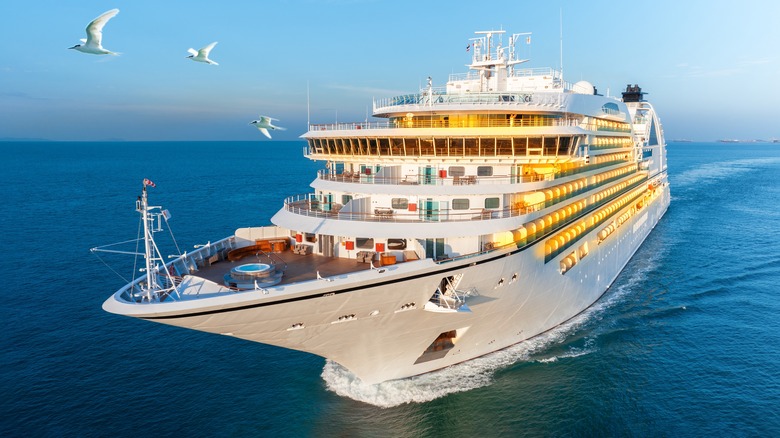
GreenOak/Shutterstock
What makes one type of cruise ship cabin better than another? At the end of the day, it’s all subjective. One passenger might hate the idea of a windowless room, but the person next door may well be grinning from ear to ear as they count the money they’ve saved. Being in a room near the top of the ship with a panoramic view of the ocean is an unforgettable experience for some, while others would happily swap it for a room lower down the ship that isn’t going to sway as much.
No two guests are exactly the same, and it all comes down to preference. So, how did we put this list together? To create this in-depth rundown of cruise ship room types, the writer relied on personal experience at sea as well as reviews and articles from a host of professionals covering the cruise industry. The opinions of individuals who have worked on cruise ships before, and who therefore possess a deeper understanding of cabin pros and cons, were also taken into account.

